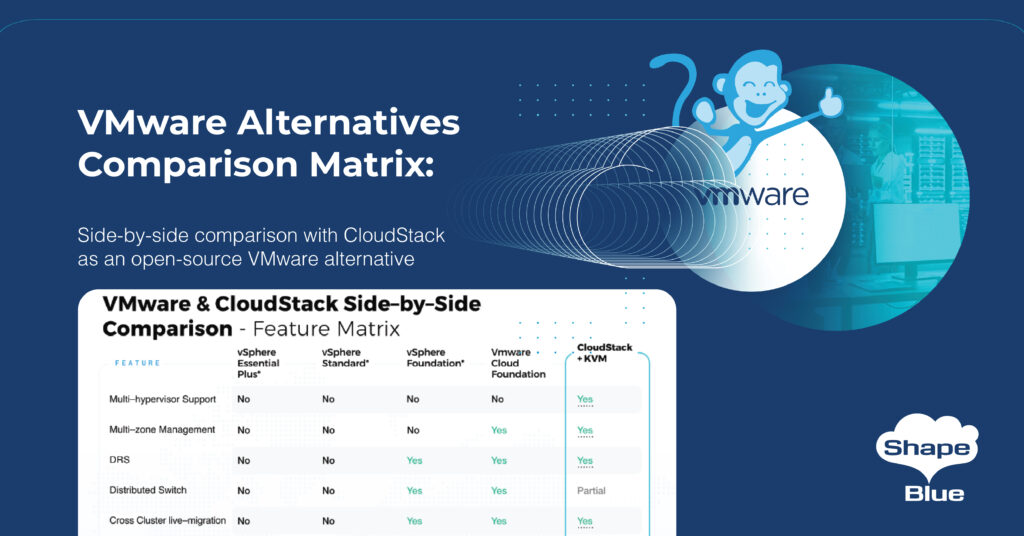VMware Alternatives: Top Choices & Guide To Switching In 2025
Are you grappling with the complexities of virtualization and wondering if there's a better way? The recent changes in VMware's licensing model, prompted by its acquisition, have sparked a widespread reevaluation of virtualization strategies, making the exploration of viable alternatives a critical exercise for organizations of all sizes.
For many, the shift away from VMware represents more than just a change in technology; it's an opportunity to optimize infrastructure, control costs, and embrace modern approaches to application deployment and management. This is especially true for Red Hat customers, or those considering a migration from VMware, as alternative platforms offer tools designed to ease the transition of virtual machines. But the considerations extend far beyond the simple question of replacing a hypervisor. The evolving landscape of IT demands that organizations evaluate whether to modernize their applications, potentially through containerization, as part of this process. This broader perspective opens up possibilities that were previously constrained by the limitations of a single platform.
The question of what constitutes a suitable alternative to VMware is multifaceted, with the answer varying based on an organization's specific requirements, goals, and budgetary constraints. Some are free, while others are commercial products. A solution that fits your budget is important. It is crucial to understand the differing features and strengths that each option brings to the table before deciding. The choice of a suitable VMware alternative is a pivotal decision for organizational success, with ramifications for everything from day-to-day operations to long-term strategic planning.
- Bolly4u Your Guide To Free Movies Entertainment Discover Now
- Explore Maplestar My Dressup Darling Stunning Art Anime
To offer a clearer perspective, let's examine the key aspects of this critical technological shift, starting with a look at the core players:
| Aspect | Details |
|---|---|
| Core Issue | The shifting landscape of virtualization, driven by changes in VMware's licensing and the need for cost-effective, flexible solutions. |
| Key Drivers | Broadcom's acquisition of VMware and changes to the licensing model, rising costs without commensurate value, and the desire for more agile cloud strategies. |
| Target Audience | IT professionals, engineering leaders, and organizations currently using VMware or considering virtualization solutions. |
| Primary Goal | To discover viable alternatives that offer robust virtualization features, competitive pricing, and improved flexibility. |
| Key Technologies Mentioned | Virtualization, hypervisors, containerization, cloud platforms, hybrid cloud models, and ultra-converged infrastructure. |
| Major Players | Nutanix, Red Hat OpenShift, Azure Virtual Machines, VirtualBox, Proxmox, and others. |
| Important Considerations | Scalability, security, cost, ease of management, integration with existing infrastructure, and vendor support. |
| Future Outlook | A shift towards more open, flexible, and cost-effective virtualization solutions that support hybrid and multi-cloud strategies. |
| Reference | VMware Official Website |
When we're looking at VMware alternatives, we're primarily focused on enterprise solutions, not desktop virtualization solutions like VMware Workstation. Many organizations are examining potential alternatives for their private cloud solutions. We will explore the various options, considering their strengths, weaknesses, and suitability for different organizational needs.
One critical aspect to consider is scalability. Your VMware alternative needs to be fully scalable to ensure that multiple virtual machines can be deployed as needed, and the solution must maintain a steady, secure, and stable level of performance at all times. Different VMware alternatives offer different features and capabilities.
- Odisha Viral Videos Social Media Safety Actresss New Series
- Hubflix Where To Watch Movies Online Features Risks Explored
Ultraconverged infrastructure (UCI) emerges as a noteworthy contender, offering capabilities that VMware and legacy HCI solutions often fall short of delivering. UCI integrates virtualization, storage, and networking into a single data center operating system, exemplified by solutions like VergeOS. UCI redefines the relationship between resources, ensuring that storage and networking are equal citizens alongside the hypervisor, unburdened by the "virtualization tax" that can cripple VM performance.
For those whose priorities lie within the Microsoft ecosystem, Azure Virtual Machines and Azure Local present attractive alternatives, particularly if your goal is more azure integrated services and management. Similarly, for Red Hat customers, or those considering a switch, the platform provides tools for migrating customers' virtual machines.
Nutanix stands out as a leading alternative to VMware due to its hybrid cloud model, which provides an agile cloud infrastructure. This model allows users to host their virtual machines and applications effectively. It's a strong option, providing infrastructure that can adapt to changing needs.
The question then becomes, what should organizations consider when evaluating alternatives? The answer lies in a methodological assessment of current infrastructure, team capabilities, and future goals. You can stick with the old model, swap hypervisors, or rethink what kind of platform you want to build on. Broadcoms VMware play is forcing every engineering leader to reconsider their stack.
As a type 1 hypervisor, users can create. Virtualization software is a powerful tool that can help businesses increase efficiency, reduce costs, and improve resource utilization. The top VMware alternatives in 2025. While there are many virtualization platforms out there, here are the three that we recommend to our clients. When choosing a VMware alternative, there are a number of factors to consider, including budget, scalability, and security. The best VMware vsphere alternatives are Red Hat OpenShift, Azure Virtual Machines, and VirtualBox.
Several factors come into play during this evaluation process. For those seeking ways to cut costs, a less expensive alternative to VMware becomes a priority. As VMware increases its costs without increasing its value, the reasoning to run all VMware decreases. You have to buy the software, storage hardware, and pay for software implementation. These and many other costs can take longer to project your ROI.
The market is evolving, and organizations are facing the pressure to innovate. Broadcom's acquisition of VMware has sparked a mass exodus of customers seeking cheaper and more flexible solutions. This presents an opportunity to rethink virtualization, cloud strategy, and modernization efforts. Many IT professionals find themselves exploring other options for reasons such as hefty licensing fees. While VMware often requires hefty licensing fees, many alternatives offer free or competitively priced solutions.
There is a pressing need for solutions that are both secure and scalable. Proxmox and VMware ESXi both offer a high degree of security with built-in functions and authentication methods. VMware ESXi offers fast installation, user-friendly management tools, and good scalability. Choosing the right VMware alternative for your business and exploring six cloud platforms that offer versatile, scalable, and secure virtualization solutions for various workloads and scenarios are crucial steps.
Many are considering their virtualized infrastructure, and it is important to explore some VMware alternatives. This means that your VMware alternative needs to be fully scalable to ensure that multiple virtual machines can be deployed as needed. Your VMware alternative solution needs to maintain a steady, secure, and stable level of performance at all times. Discover the best VMware alternatives that offer robust virtualization features, competitive pricing, and more. The choice of a suitable VMware alternative is a pivotal decision for organizational success. Vmware customers see Broadcoms actions as an opportunity to rethink virtualization, cloud strategy, and modernization efforts.
In conclusion, while VMware has been a dominant player in the virtualization landscape, the recent changes and evolving demands of modern IT are driving a wave of innovation and competition. Organizations must carefully consider their specific needs, goals, and budget when selecting a VMware alternative. Whether the priority is cost savings, enhanced security, improved scalability, or deeper integration with cloud services, the alternatives offer a compelling array of choices. This is an opportune moment to reassess and optimize your virtualization strategy, paving the way for a more agile and efficient IT infrastructure.
- Mkvcinemas Risks Alternatives For Movie Downloads
- Michael Consuelos Marriage A Deep Dive Into His Life Love

Apache CloudStack vs. Nutanix as VMware Alternatives for Virtualisation

Sangfor vs VMware Comparsion 2024 Best VMware Alternative

VMware Alternatives Various Types of VMware Alternatives